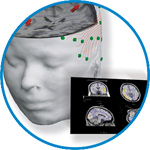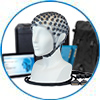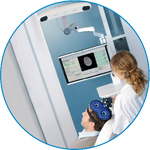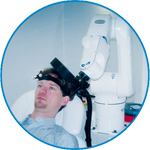- Home
- About ANT
-
Products

asa
asa is a highly flexible EEG/ERP and MEG analysis package with a variety of source reconstruction, signal analysis and MRI processing features.
.jpg)
eego mylab
The new frontier in multimodal brain research. With up to 16 kHz sampling rate, 256 EEG channels and unique software features, eego mylab gives you an unprecedented in-depth understanding of the human brain.

eego sports
eego sports offers complete freedom to collect high-density EEG data, bipolar EMG signals, and a variety of physiological sensor data, wherever and whenever required, with publish quality data in less than 15 minutes!

waveguard net
The waveguard net sets a new standard for research applications requiring high-density EEG data acquisition with quick preparation time, high flexibility, and subject comfort.

visor2
Our new and upgraded visor2 solutions integrate all the latest technologies for navigated rTMS, dual-coil navigation support, EEG-TMS recordings and pre-surgical evaluation for the highest quality in research and clinical procedures.

powerMAG ANT
The PowerMAG ANT 100 rTMS stimulator is designed for the specific needs of high-end TMS applications. Powerful high-frequency TMS as well as high precise single pulse and repetitive pulse protocols are combined in one single device.

xensor
xensor offers the solution for digitization of 3D electrode positions. xensor takes care of the whole procedure; it records, visualizes and stores positions acquired with a dedicated digitizer.

waveguard original
waveguard original is the cap solution for EEG measurements compatible with fMRI, MEG and TMS system. Use of active shielding guarantees performance in even the most demanding environments.

waveguard connect
waveguard connect EEG caps are a perfect match for hospitals and institutes aiming at reliable EEG, maximum uptime and great patient comfort! For optimal signal quality, the electrodes are made of pure, solid tin.

waveguard touch
waveguard touch is a dry electrode EEG cap. The unique Ag/AgCl coated soft polymer electrodes provide stable, research-grade EEG signals while maintaining subject comfort. The combination of these innovative dry electrodes and the industry-leading waveguard cap makes waveguard touch the best solution for dry EEG.

smartmove
smartmove allows planning of a complete TMS session ahead by defining stimulation sites based on anatomical MRI information and functional information like fMRI, PET or EEG/MEG.
Stay - References
- Support
- Events
- News
- Contact Us
You are here
MRI-guided dmPFC-rTMS as a Treatment for Treatment-resistant Major Depressive Disorder
MRI-guided dmPFC-rTMS as a Treatment for Treatment-resistant Major Depressive Disorder
Here we outline the protocol for magnetic resonance imaging (MRI) guided repetitive transcranial magnetic stimulation (rTMS) to the dorsal medial prefrontal cortex (dmPFC) in patients with major depressive disorder (MDD). Technicians used a neuronavigation system to process patient MRIs to generate a 3-dimensional head model. The head model was subsequently used to identify patient-specific stimulatory targets. The dmPFC was stimulated daily for 20 sessions. Stimulation intensity was titrated to address scalp pain associated with rTMS. Weekly assessments were conducted on the patients using the Hamilton Rating Scale for Depression (HamD17) and Beck Depression Index II (BDI-II). Treatment-resistant MDD patients achieved significant improvements on both HAMD and BDI-II. Of note, angled, double-cone coil rTMS at 120% resting motor threshold allows for optimal stimulation of deeper midline prefrontal regions, which results in a possible therapeutic application for MDD. One major limitation of the rTMS field is the heterogeneity of treatment parameters across studies, including duty cycle, number of pulses per session and intensity. Further work should be done to clarify the effect of stimulation parameters on outcome. Future dmPFC-rTMS work should include sham-controlled studies to confirm its clinical efficacy in MDD.

 Read more
Read more.jpg)




